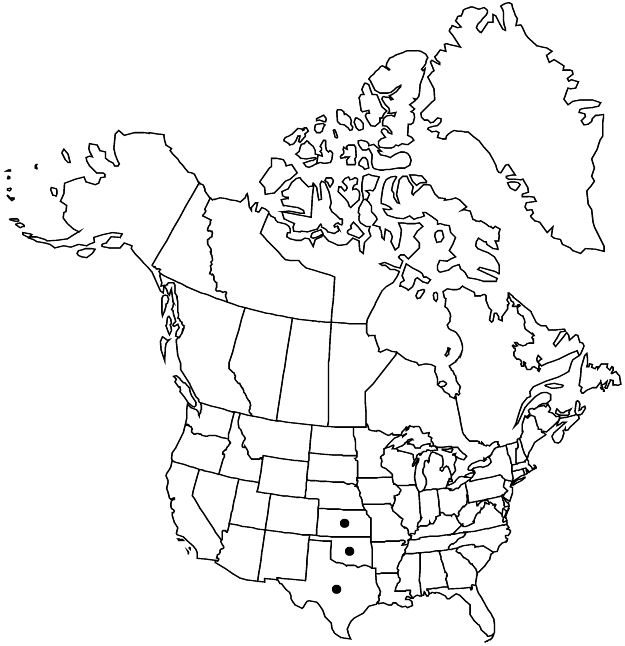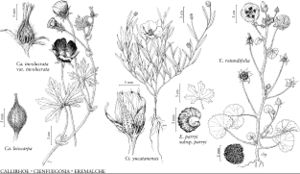Difference between revisions of "Callirhoë leiocarpa"
J. Wash. Acad. Sci. 28: 108. 1938.
FNA>Volume Importer |
FNA>Volume Importer |
||
| Line 55: | Line 55: | ||
|publication year=1938 | |publication year=1938 | ||
|special status=Endemic;Selected by author to be illustrated | |special status=Endemic;Selected by author to be illustrated | ||
| − | |source xml=https://jpend@bitbucket.org/aafc-mbb/fna-data-curation.git/src/ | + | |source xml=https://jpend@bitbucket.org/aafc-mbb/fna-data-curation.git/src/f6b125a955440c0872999024f038d74684f65921/coarse_grained_fna_xml/V6/V6_434.xml |
|subfamily=Malvaceae subfam. Malvoideae | |subfamily=Malvaceae subfam. Malvoideae | ||
|genus=Callirhoë | |genus=Callirhoë | ||
Revision as of 20:15, 24 September 2019
Plants annual, sometimes biennial. Stems 1–7(–10), erect to weakly erect, 0.5–10(–12) dm, glabrous or sparingly hairy, hairs 4-rayed, stellate, somewhat glaucous. Leaves: stipules persistent, strongly auriculate, 4–8(–12) mm; petiole 0.7–8(–12) cm; blade suborbiculate, reniform-cordate, or ovate, shallowly to deeply 3–7-lobed, 1–7(–9) × 1–9.5 cm, surfaces sparingly hairy, hairs 4-rayed, stellate, and simple abaxially, mostly simple adaxially, lobes oblanceolate. Inflorescences racemose; involucellar bractlets absent. Flowers bisexual or functionally pistillate; calyx lobes valvate in bud, forming apiculate or acuminate point; petals reddish purple with white basal spot, 1.5–2.3(–3.5) cm (male sterile 1.1–1.6 cm). Schizocarps 5.5–7 mm diam.; mericarps 10–14, 2.8–4.5 × 1.5–2.7 mm, glabrous, dehiscent; beaks prominent, 1–2 mm; collars well developed, 3-lobed. 2n = 28.
Phenology: Flowering (late winter–)spring–mid summer, sporadically later.
Habitat: Prairies, mesquite-juniper woodlands, borders of woods and thickets
Elevation: 0–1000 m
Distribution

Kans., Okla., Tex.
Discussion
Callirhoë leiocarpa has been confused with C. pedata by some authors. It is cultivated occasionally.
Selected References
None.
